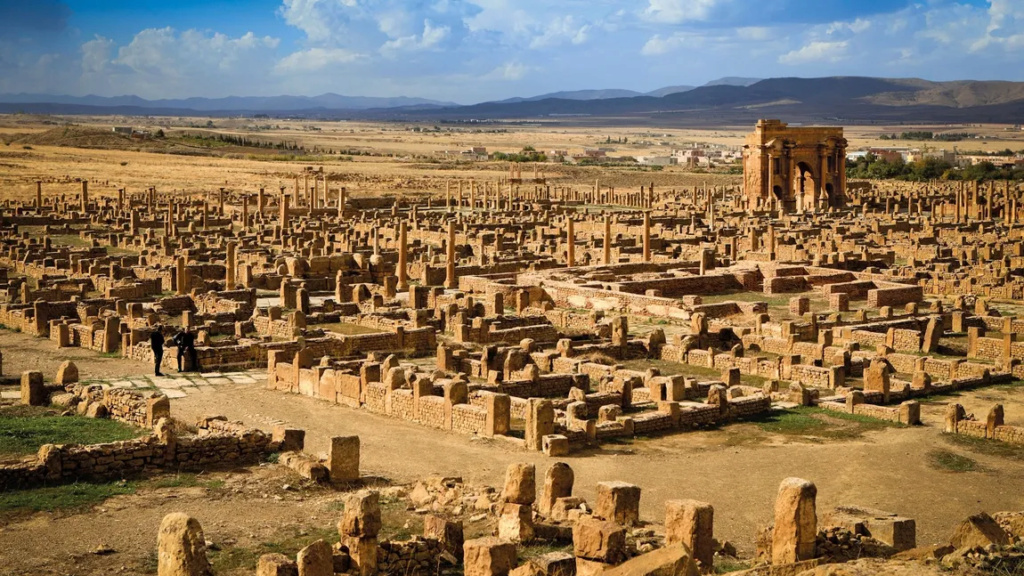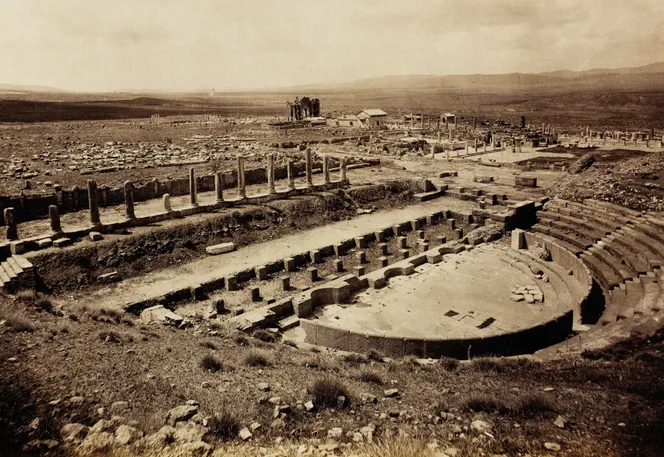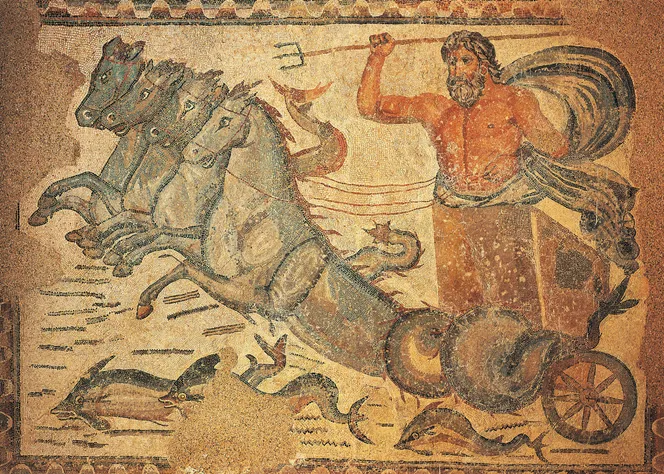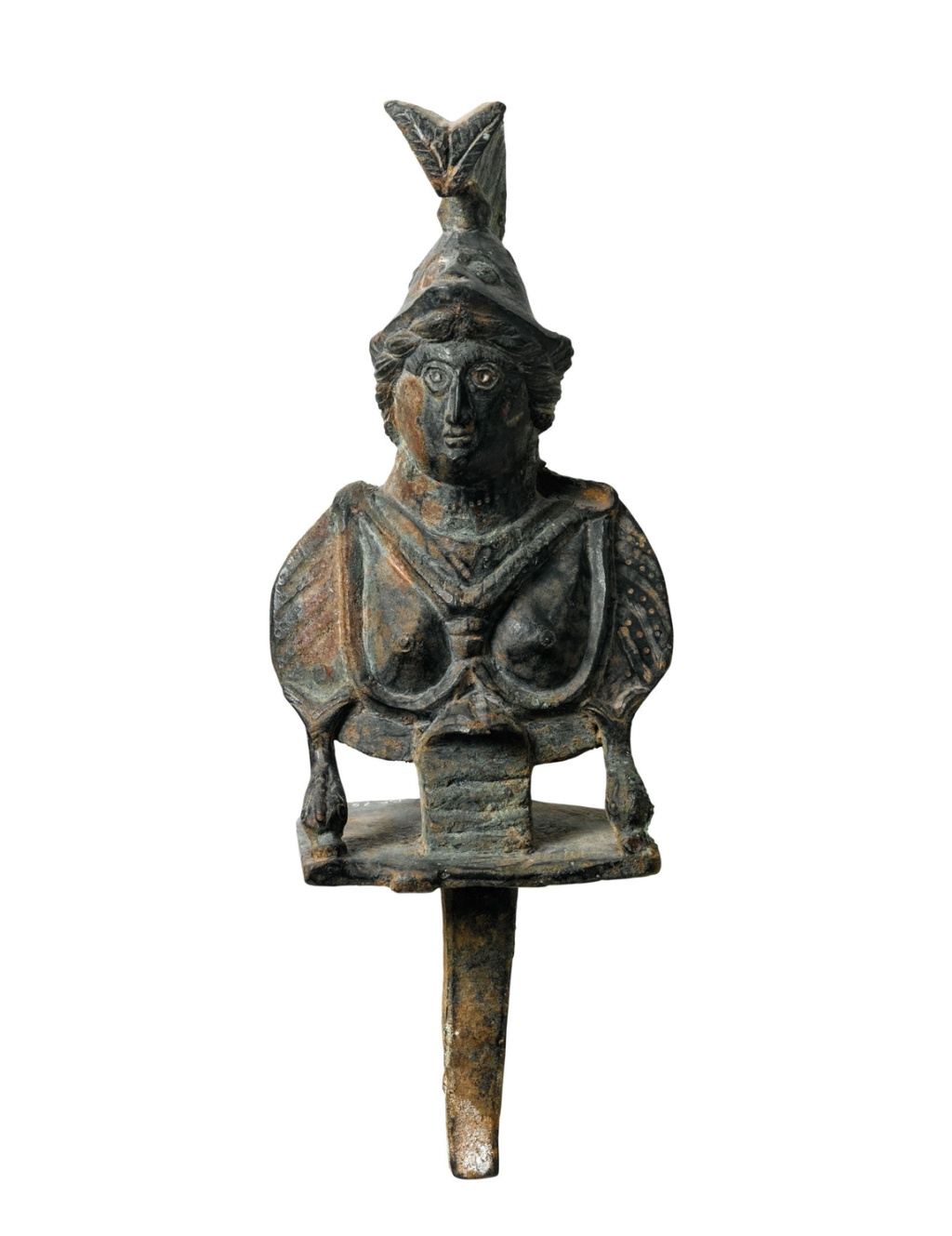Thamugadi: the sublime Roman city buried by the Sahara
Nicknamed the Pompeii of North Africa, Thamugadi was gradually forgotten under the sands of the desert, until a Scottish adventurer came to take an interest in it centuries later.

It’s rather rare to see entire towns vanish, but that’s what happened to the Roman outpost of Thamugadi. Founded by Emperor Trajan in 100 CE, this city also known as Timgad was located in the North African province of Numidia.

James Bruce peint par Pompeo Girolamo Batoni en 1762. Galerie nationale d'Écosse, Édimbourg.Home to Legio III Augusta veterans,
Thamugadi was a prosperous city for hundreds of years, so prosperous that it even became a prime target for looters. After an invasion of the Vandals in 430, repeated attacks weakened the city which never regained its former glory and was abandoned in the 8th century.
Thamugadi was swept away and then engulfed by the sands of the desert. It would take more than a thousand years before he was visited again by a team of explorers led by a colorful Scottish man in the 18th century.
James Bruce painted by Pompeo Girolamo Batoni in 1762. National Gallery of Scotland, Edinburgh.
A MAN OF STATE AND KNOWLEDGE
Now famous for his controversial discovery of the source of the Blue Nile in Ethiopia, this Scottish nobleman by the name of James Bruce served as British consul in the coastal city of Algiers, the current capital of the Algeria, in 1763.
Stout build, Bruce was a knowledge-hungry scholar with a curious mind. Before going to Algiers to take up his post, he spent a few months in Italy to study the history of this African region and its role in antiquity.
His bad temper and strong opinions quickly led to conflicts with his London superiors. In 1765, he was dismissed from his post. Rather than return to Britain, he embarks on an adventure across Africa with a Florentine artist named Luigi Balugani. During their journey, they take notes and draw a portrait of the many individuals they meet and the places they visit.

L'amphithéâtre de Thamugadi a été construit au 2e siècle. Photographié ici en 1893, dix ans après ...
The Thamugadi Amphitheater was built in the 2nd century. Photographed here in 1893, ten years after excavation began, it was in a remarkable state of preservation.
TRAVELING THE DESERT
At the start of their odyssey, the two men head south towards the Algerian Sahara in search of vestiges of ancient civilizations. When they set out to explore the most remote parts of the region, they have already seen several ruins from the Roman era.
On December 12, 1765, they reached a town that they identified as Thamugadi. For many, they are the first Europeans in centuries to visit this site, established on the northern slopes of the Aurès mountains. “It was a small town, but it was full of elegant buildings,” Bruce writes in his journal. He is convinced that these ruins are the remains of the city founded by Emperor Trajan more than a millennium earlier.
On the first day Bruce takes notes and Balugani draws Trajan’s “triumphal arch”. The following day, they return to the scene and continue their exploration with the discovery of an amphitheater. Bruce clears the sand and reveals sculptures of the Roman emperor who had succeeded Hadrian in AD 138, Antoninus the Pious, and his wife, Faustina the Elder, works he describes as being of a “Sublime beauty”.
After covering the sand sculptures, Bruce resumes his journey. He documents other sites across North Africa and Ethiopia, even going so far as to claim the discovery of the source of the Blue Nile. Balugani died in 1770 and Bruce returned to London in 1774. When he unveiled his finds, they were greeted with skepticism and disbelief. Stunned by this reaction, the explorer retired to Scotland. In 1780 he embarked on writing memoirs of his African period, a five-volume work entitled Voyage aux sources du Nil and published in 1790. When Bruce died four years later, most of Britain still refuses to recognize his contributions.

Cette mosaïque du 4e siècle représentant le dieu romain de la mer, Neptune, dans un char ...
The Thamugadi Amphitheater was built in the 2nd century. Photographed here in 1893, ten years after excavation began, it was in a remarkable state of preservation.
THE CEREAL ROUTE
Research carried out by Playfair and French academics has enabled historians to piece together the history of the city. Originally called the Marciana Traiana Thamugadi colony, in homage to the sister of Emperor Trajan, Thamugadi was organized in a checkerboard pattern.
In the middle of the third century, the city’s population peaked at 15,000 residents. They enjoy quality public infrastructure, including a sumptuous library and a total of 14 thermal baths. The comfort of Thamugadi’s installations and the presence of mosaics have often caused comparisons with Pompeii, some even going so far as to qualify the city of Pompeii in North Africa.
The location of the city was strategic for the protection of the southern borders of the Roman Empire. North Africa was the nerve center for grain production, and the Legio III Augusta was stationed at Thamugadi to protect the land and the transportation of grain to Rome. Every two years, several hundred men left the legion and settled in Thamugadi as a retirement for their services. Their presence also served to deter potential attackers.
The city embodied the omnipotence of Rome on the southern border of the Empire. Its cosmopolitan population has seen worshipers of the ancient gods and Christians coexist. For a time, Thamugadi was a stronghold of the heretical Christian of the Donatists.

Buste en bronze du 3e siècle représentant Minerve, découvert à Thamugadi. Musée du Louvre, Paris.
The situation of general crisis which was showing itself always more pressing on the borders of the Roman Empire ends up reaching Thamugadi. After being plundered by the Vandals during the 5th century, the city began to fall into disrepair. After the fall of the Western Roman Empire, Thamugadi experienced a brief renaissance as the center of Christianity and a fort was built on the outskirts of the city in 539, but it was abandoned before or during the Arab invasions of the 8th century.
From this period, the Sahara gradually began to cover Thamugadi and the city remained hidden under the sand for over a millennium, until the arrival of James Bruce and the other explorers who rediscovered its past glory. Thamugadi joined the UNESCO World Heritage List in 1982.
https://jazairhope.org/en/thamugadi-the-sublime-roman-city-buried-by-the-sahara/

